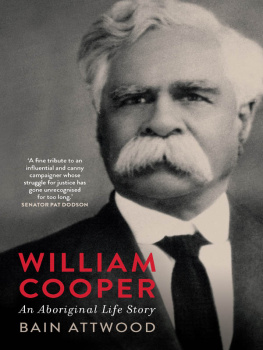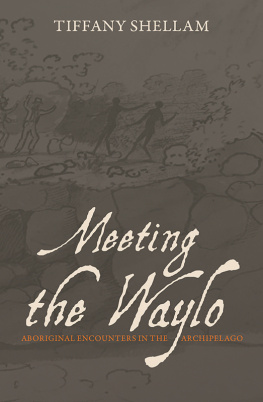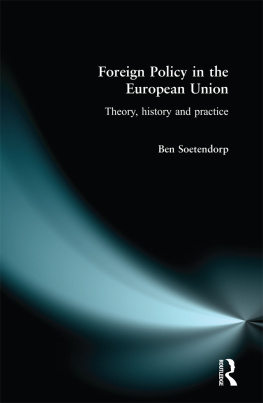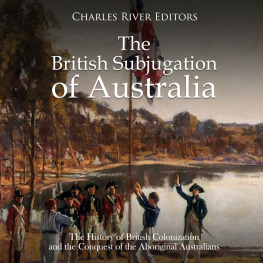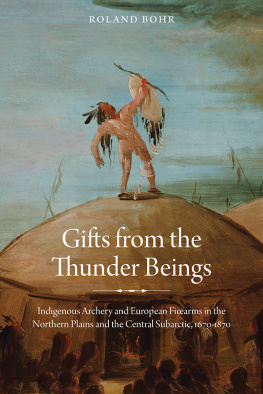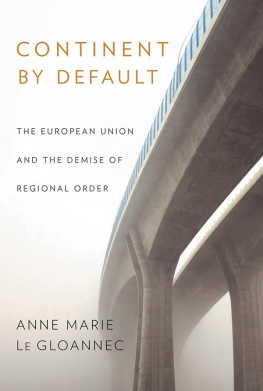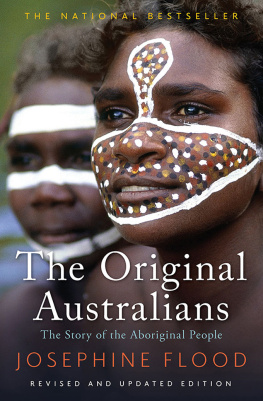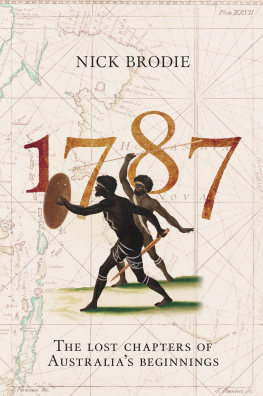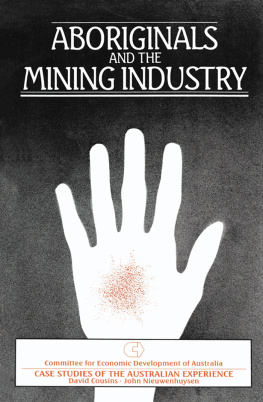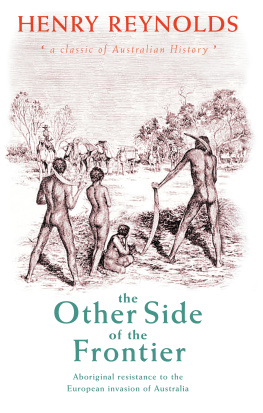The Making of the Aborigines
First published 1989 by Allen & Unwin
Published 2020 by Routledge
2 Park Square, Milton Park, Abingdon, Oxon OX14 4RN
605 Third Avenue, New York, NY 10017
Routledge is an imprint of the Taylor & Francis Group, an informa business
Bain Attwood 1989
All rights reserved. No part of this book may be reprinted or reproduced or utilised in any form or by any electronic, mechanical, or other means, now known or hereafter invented, including photocopying and recording, or in any information storage or retrieval system, without permission in writing from the publishers.
Notice:
Product or corporate names may be trademarks or registered trademarks, and are used only for identification and explanation without intent to infringe.
National Library of Australia
Cataloguing-in-Publication entry:
Attwood, Bain Munro, 2956
The making of the Aborigines
Bibliography.
Includes index.
ISBN 0 04 370185 X.
[1]. Aborigines, AustraliaRace identity. [2].
Aborigines, AustralianHistory. I. Title.
305.89915
Library of Congress Catalog Card Number: 88-83855
Set in 10/11 Aster by Best-set Typesetter,
Hong Kong
ISBN-13: 9780043701850 (pbk)
In the writing of this book I have been very fortunate. John Hirst and Richard Broome guided my earlier doctoral study and have continued to take a benevolently paternal interest in my work; Richard kindly found time to read an earlier draft. I have also benefited from the intellectual stimulus provided by close colleagues at Monash University: Andrew Markus has been a source of inspiration and has been unflagging in his encouragement and guidance; Marian Aveling urged me to become more theoretical; Brian Kennedy offered incisive criticisms of my manuscript; Val Edens ensured that it would become a book, and Bess Brudenell, Rosemary Johnston, Rhonda Lyons, Carleen Marshall and Margaret Morris provided much-needed secretarial help. Gary Swinton expertly drew the diagram and the map, and Irmgard Weberruss proved a diligent translator of German Gothic script. At Allen & Unwin, John Iremonger had faith in me and Venetia Nelson was a skilled editor. Carole Ferrier commented on an earlier rendition of the second chapter, which appeared in Hecate, and gave me permission to publish this revised version. La Trobe and Monash Universities funded the research, and many librarians at the La Trobe Library, the Mitchell Library and the National Library of Australia took me through the labyrinths of their collections, as did archivists at the Public Record Office of Victoria and the Australian Archives at Brighton.
Few people write books without the help of friends and kin and I have been no exception. Barbara Younger has always been there, and no words can express my debt to her for such a loving friendship. She also read and commented upon several drafts. Likewise, Rose Lucas provided valuable editorial advice, and so much more. Craig Ayrey gave me the idea for this book and faithfully supported me in bringing it to fruition. I am also thankful for the support of others who have played an important part in the making of this book: Ian Britain, Cassie Coburn, Joy Damousi, Michael Davis, Meredith Fletcher. Tom Griffiths, Katie Holmes, Liz Nelson, Jan Penney, Gillian Robinson and Joost Cote, Sally Trembath, and Tony Wood. Most importantly, my parents have unstintingly given me love and encouragement, and it is to them that I dedicate this book.
Photocredits: Acknowledgement is made for permission to reproduce photographs to the following: La Trobe Library for photographs on pp. 10, 13, 15, 19, 42, 94, 119; Public Record Office of Victoria for the sketch on p. 22; National Library of Australia for the photographs on pp. 67, 73; Australian Institute of Aboriginal Studies for the photographs on pp. 113, 116; Mitchell Library for the photograph on p. 47; Mary Howitt Walker for the photograph on p. 78. The photograph on p. 14 is from the Australian Sketcher 5 September 1874; that on p. 17 from The Leader 5 January 1907; that on p. 108 from the Ladies Almanack (Melbourne) 1859; and that on p. 9 from the Australasian 11 April 1908.
The fundamental tenet which informs this book is as follows: the aboriginal peoples who lived in this continent for 40000 years or more before the coming of Europeans in 1788 were not the homogeneous group implied by the name Aborigines; rather, they were named and have named themselves Aborigines, blacks, Kooris or Murris etc. only in the context of colonisation and of their ensuing relationship with Europeanswho, conversely, came to be Australians.dispossession of the indigenes, and specifically in the expropriation of their land as an economic and cultural resource. In many areas of Australia this was completed within a decade or two of first contact, and it left traditional communities depopulated, poor and diseased, and struggling for survival. The destructive impact of the early phase of colonialism forms the background of this study, but it is not my focus. Instead, I deal with the period after the killing times, and am concerned with examining cultural forms of domination rather than physical or economic ones, seeing how these enabled European colonisers to make Aborigines.
One of the most powerful means by which the intruders constructed Aborigines was ideological, and in one essay here (The great principle) I have charted how missionaries tried to change the indigenes in spatial and temporal terms, concentrating on the pattern of relationships which developed between the colonisers and the colonised on one particular mission (or reserve). Off the missions, there were other sources of power which enabled Europeans to control Aborigines; the rule of law was one of these, although it could also mediate between the two peoples in such a way as to protect Aborigines, and both sides of this coin are considered here in White mans laws. There, too, as well as in earlier essays, some of the savage consequences of the missionaries dominion over Aborigines are explicitly revealed.
Although intent on showing how various colonial forces shaped the structures within which Aborigines lived out their lives, I do not imply that these determined their conditions of existence completely. It would be erroneous to assume that Aborigines were merely the creation of Europeans or to cast them as the passive victims of European colonisation. The aboriginal peoples obviously once had a reality independent of European intruders, and after 1788 they reacted to the European invasion as historical agents. Out of the exchange or dialectic between the dominant and the dominated there came a transformed consciousness for the indigenes, one shaped both by European culture and by their ownand so their part in becoming Aborigines was both determined and determining. In other words, they played an important part in their own making. This is revealed in the second essay, a life history of an Aboriginal woman, who came to speak in the name of her coloured brethren and sisters, thereby adopting an identity which can be understood only in relation to Europeans who deemed Aborigines to be coloured and, more specifically, to those missionaries whose religious language became her own; significantly, however, she also named herself in terms of her relationship with her Aboriginal sisters and invested brethren with her own meaning of kin. In another essay (In accordance with the custom) the Aborigines experience and consciousnessand the change and continuity integral to itis examined further, while in The great principle the political dimension of their growing sense of Aboriginality is briefly considered.


